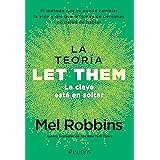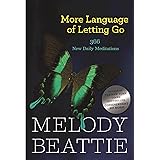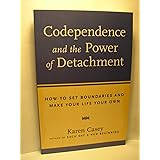The Subjectivity of Shopping: Reclaiming Your Time and Intent
The contemporary landscape of consumerism has evolved significantly, presenting both opportunities and challenges for individuals navigating their shopping habits. As observed in the accompanying video featuring Nadia Morozova’s insightful TEDxRoma talk, the act of shopping often transcends mere transactional exchanges. It becomes evident that our engagement with retail, whether online or in physical stores, is profoundly shaped by our subjective perception of time and the underlying psychological mechanisms driving our decisions. This analysis delves deeper into the intricacies of shopping behavior, offering a framework for those seeking to regain control of their shopping experiences and make more conscious choices about how their valuable time is spent.
The Evolving Definition of “Time Well Spent” in E-commerce
In the early 2010s, with the nascent stages of e-commerce experiencing rapid development, a fundamental premise was the promise of time-saving for consumers. The convenience of digital platforms was expected to streamline the purchasing process, freeing up valuable hours previously dedicated to physical store visits. However, this expectation has been widely challenged. Instances of individuals spending 60 to 80 minutes on online grocery shopping are not uncommon, which prompts a critical re-evaluation of whether these activities genuinely constitute a time-saving exercise.
The Danish philosopher Søren Kierkegaard, a significant figure in existential psychology, posited that the human sense of time is inherently subjective. This philosophical insight holds profound relevance in understanding contemporary purchase decisions. The perceived deception of time in online retail environments is a critical area for exploration. It has been shown that despite the efficiency promised by e-commerce, an average of 10 days annually is still dedicated to various shopping-related activities. This substantial allocation of 240 hours, or 14,400 minutes, begs the question of whether this time is consistently considered well spent, particularly for those looking to regain control of their shopping patterns.
Deconstructing Purchase Intent: Planned, Unplanned, and Impulse Decisions
A granular understanding of shopping behavior necessitates a differentiation between various types of purchases. Traditional economic models frequently assume consumers engage in highly rational decision-making, where an individual enters a store with a predefined list, acquires the necessary items, and departs with maximum efficiency. Yet, real-world observations consistently deviate from this idealized model. Nadia Morozova’s PhD research, for instance, illuminated the existence of distinct purchase categories beyond the purely planned acquisition.
Unplanned Purchases: Resonating with Latent Needs
Unplanned purchases are those not predetermined before entering a retail environment but are frequently linked to an existing, often subconscious, need state. For example, a consumer might enter a drugstore with the specific intention of buying a particular item. While browsing, a product such as sunscreen, perhaps with an attractive promotional offer, is noticed. Although sunscreen was not on the immediate shopping list, the product resonates with a known future need (e.g., an upcoming trip). The opportunity is then seized, and the purchase is made. This process is not a random act; rather, it is influenced by a rapid cognitive and physiological response.
Research into the underlying mechanisms of these decisions indicates a robust heart rate activation within the first five seconds of a consumer encountering a product. This immediate physiological response occurs because the product quickly connects with a relevant need state, triggering what might be described as an “aha moment.” In the context of purchasing hair care products, for instance, anything appealing to the broader need for “hair treatment” can elicit an immediate resonance in the brain, potentially leading to its acquisition even if it was not part of the initial shopping list. The subjective experience associated with such purchases often leads consumers to perceive the time as well spent, given the perceived benefit gained.
Impulse Purchases: The Emotional Trigger Point
Impulse purchases are widely recognized for their spontaneous nature and their strong association with emotional activation. While often perceived as instant decisions, scientific inquiry has revealed a more nuanced timeline. Neuroscientific studies, including fMRI research, have shown that the decision to make an impulse purchase can occur approximately 8 to 12 seconds before a product is physically placed into a shopping basket. This pre-decision window is precisely when significant heart rate activation is observed, indicating a powerful emotional trigger at play.
Consider a scenario where a consumer, while shopping for shampoo, notices a novel collection of nail polish. A particular color might be visually striking and emotionally appealing, even if the consumer has no definite plan to use it. The product is then purchased, driven by an immediate emotional response rather than a rational need. This behavior illustrates how emotional cues can compel purchasing decisions, even in the absence of a logical requirement. The immediate gratification derived from such a purchase often overrides prior intentions or needs, demonstrating the powerful sway of emotional stimuli in retail environments.
The Rise of Community Commerce and Social Media’s Influence
The pandemic era significantly accelerated the evolution of digital platforms, particularly in how they foster communities and influence commerce. As noted by Morozova, joining TikTok during this period provided a unique vantage point to observe the exponential growth of “community commerce.” This phenomenon illustrates how online communities play a crucial role in inspiring new ideas and, crucially, driving purchasing decisions. It has been empirically established that social media platforms are powerful catalysts for consumer behavior.
Indeed, studies indicate that more than 70% of consumers acknowledge being inspired to make purchases by social media platforms, even when they were not actively seeking to shop. Further research, utilizing methodologies developed during Morozova’s PhD, revealed that an astonishing 63% of purchases inspired by social media platforms can be classified as unplanned. This finding has been shown to be remarkably consistent across a diverse array of product categories. Imagine browsing a social media feed and encountering a story from a content creator sharing their virtual walking challenge. The narrative resonates with an existing, though perhaps unarticulated, desire for increased physical activity. Despite not having planned to participate in such a challenge, the inspiration from the community drives the purchase. Notably, users frequently describe these community-inspired shopping experiences as “time well spent,” underscoring the subjective value attached to such engagements.
Evaluating Your Shopping Experience: A Framework for Conscious Consumption
The modern consumer journey is increasingly complex, making the question of “was that time well spent?” more pertinent than ever. It is important to acknowledge that the answer to this question remains inherently subjective, varying significantly based on individual circumstances and personal values. While one individual might derive immense satisfaction from discovering new trends on social media, another may prefer the tranquil experience of browsing in a bookstore. The interplay of time, money, and subjective experience forms the core of evaluating shopping encounters.
To cultivate a more conscious approach to shopping and to effectively regain control of your shopping habits, three principal considerations are proposed:
- Quantify the Actual Time Investment: It is suggested that individuals actively measure the time spent on shopping activities. For instance, setting a timer upon opening an e-commerce platform and stopping it upon completing a purchase can reveal surprising insights into actual time consumption. An intentional decision not to track this chronometric time may itself indicate that the quantitative measure is secondary to other, more experiential aspects of the shopping process.
- Explore Alternative Activities: Consider whether the time spent browsing stores or consuming ad-laden content online could be reallocated to activities that yield greater joy or personal fulfillment. Reflection on alternative uses of time can highlight opportunities for more enriching experiences.
- Assess Subjective Value: Ponder whether a specific shopping experience genuinely qualifies as “time well spent.” This self-inquiry encourages a deeper understanding of personal satisfaction and helps differentiate between genuinely valuable engagements and those that merely drain energy or time.
These considerations serve as a guide for consumers to critically assess their engagement with shopping, fostering a more mindful approach. For instance, spending an hour comparing two similar pairs of shoes discovered online might not always be considered time well spent, especially if it culminates in indecision and duplicate purchases. Conversely, finding a unique book that brings joy, even as an unplanned purchase during a bookstore visit with friends, exemplifies a shopping experience that can be profoundly enriching. The subjective nature of time, as articulated by Kierkegaard, thus underscores that the same experience can hold vastly different values for different individuals. It is through this critical self-reflection that individuals can begin to regain control of their shopping behaviors and cultivate a more intentional relationship with consumption, ensuring that the 14,400 minutes annually allocated to shopping are truly spent in ways that align with personal well-being and satisfaction.











